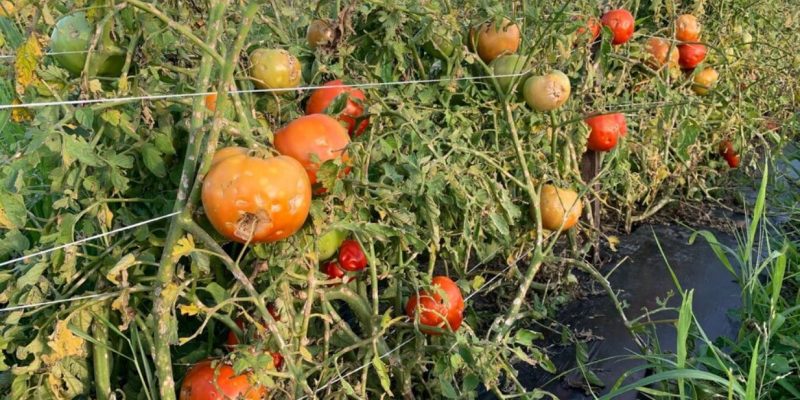Planting tomatoes during summer can be challenging due to the unpredictable nature of hail and wind. Although tomatoes are generally easy to grow and not very demanding in terms of environmental conditions, the risk of hail and wind can lead to disappointing outcomes if left unmanaged.
When hail or strong winds strike your tomato plants, they can cause significant damage to the flowers, leaves, and fruits, resulting in substantial losses and even the death of the crops.
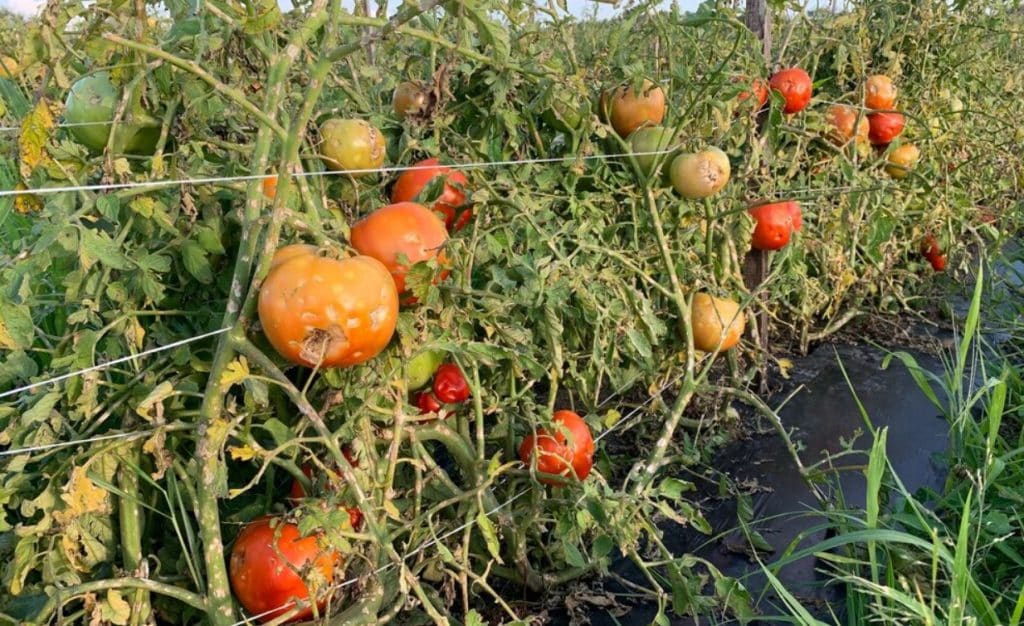
Tomatoes Damaged by Hail Storm – Sogn Valley Farm
To prevent this unfortunate scenario, this post will discuss various effective methods that you can employ to protect your tomatoes from the potential ravages of hail and wind. By implementing these strategies, you can safeguard your tomato plants and increase the likelihood of a successful harvest during the summer season.
3 Methods to Protect Tomato from Hail
Stones with a diameter greater than 0.79 centimeters can cause severe damage to plants, while hailstones worldwide can reach up to 6 inches in diameter, with hailstones in the United States ranging from 0.98 to 1.75 inches in diameter.
Therefore, when planting tomatoes in summer, precautions need to be taken. Luckily, we have three working methods that you should consider using to ensure your tomatoes survive a hailstorm.
1. Using Covers
You can choose to cover our tomatoes to protect them from hail. The idea is to ensure the hail doesn’t reach the tomatoes, and there are different covers you can use for this. For instance, you can utilize garden hail netting, which can be very durable for protecting your vegetables in your garden, and is the most recommended option to take.
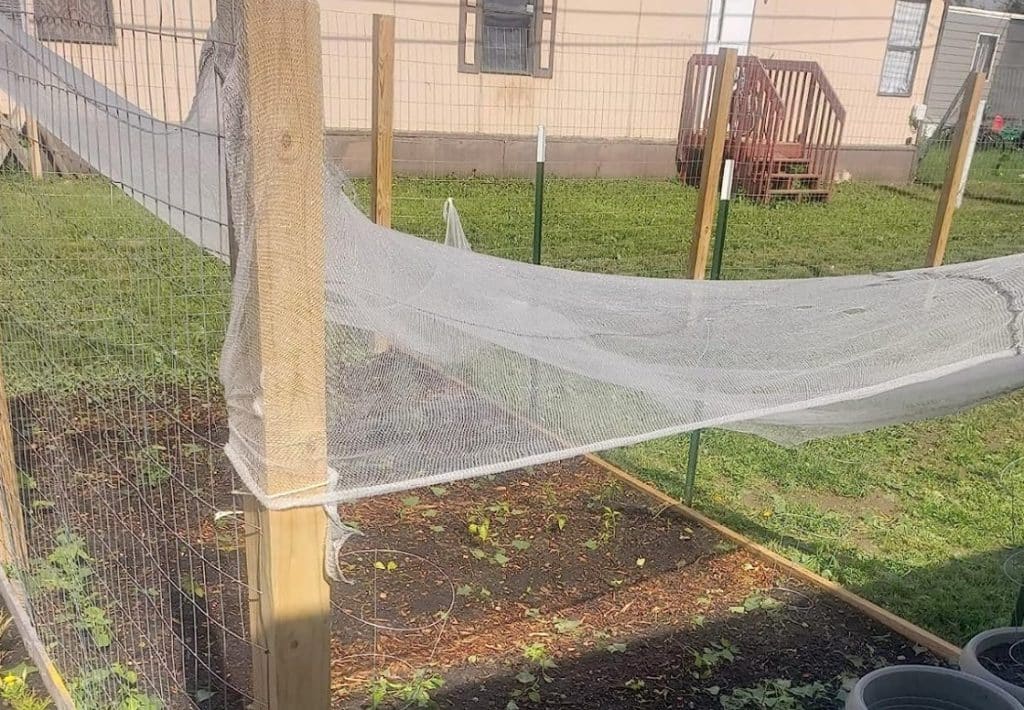
Mitef Anti Hail Netting for Garden
Alternatively, you can also use a more budget-friendly option like garden fleece to place over your tomato plants. You can place them on single tomato plants or peg them around your garden to cover a wider area. But it can only be used as a temporary hail protection measure since it is more commonly employed for winter frost protection and not be the best option for hot summer weather.
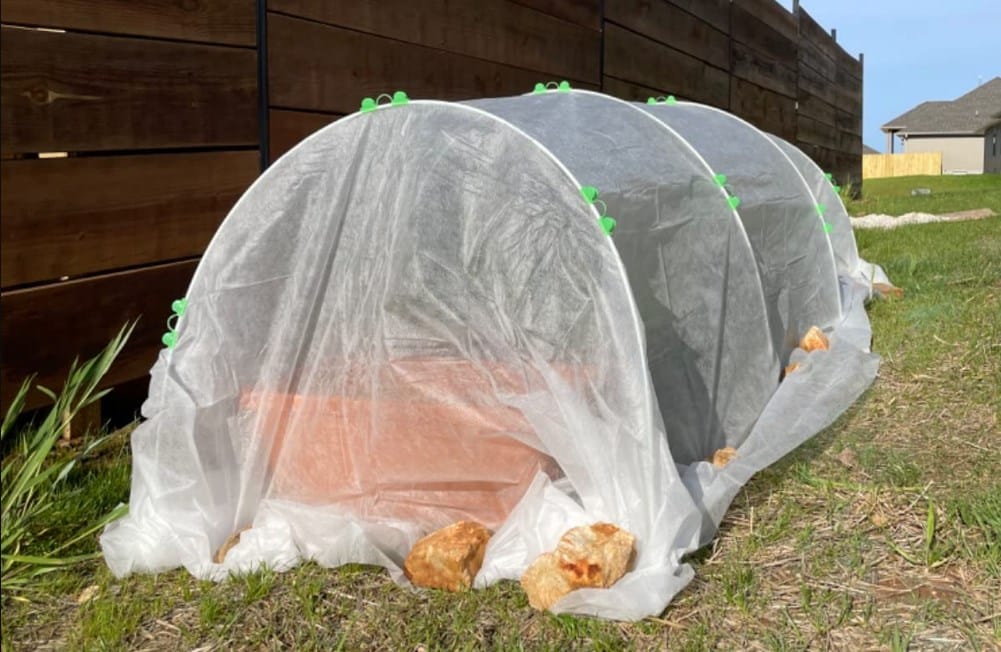
Garden fleece for tomato to protect from hail damage
Another option is to use stakes attached to the ground around the garden to place sheets or sacks to create a temporary hail covering over the tomatoes. You will have protected the tomato from hail using the mentioned covers.
2. Portable Greenhouse
For those with a relatively larger budget and a substantial number of tomatoes in their garden, a portable walk-in greenhouse is a great option to protect the tomatoes during the summer. When choosing the greenhouse covering material, it’s crucial to opt for PC (Polycarbonate) material, as it provides better defense against hail compared to most PE (Polyethylene) and PVC (Polyvinyl chloride) materials.
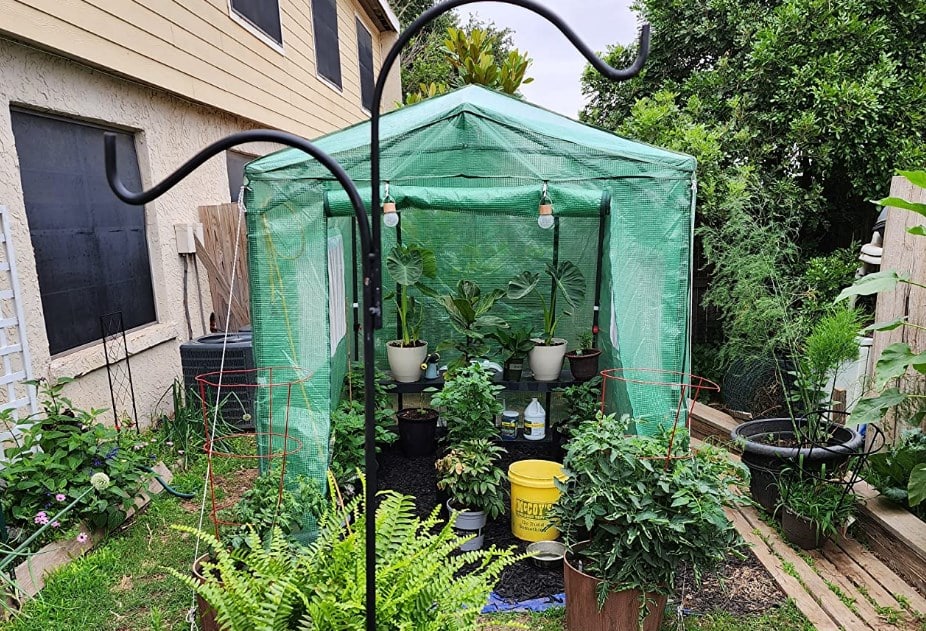
EAGLE PEAK walk-in greenhouse
To further enhance hail protection, consider adding a layer of black or white shade cloth on top of the greenhouse. This not only helps control light and heat but also provides an additional barrier against hail. To ensure maximum effectiveness, be sure to securely fasten both the greenhouse and the shade cloth with appropriate tools.
4. Making Shelters
If you have plenty of time and enjoy DIY projects, you can craft a personalized tomato shelter to manually protect your tomato plants. Using materials such as cardboard, wood sheets, aluminum mesh screen, or cloth sheets, it’s possible to create a temporary shelter for tomatoes. When the hail period passes, you can remove the shelter to expose the tomatoes to sunlight.
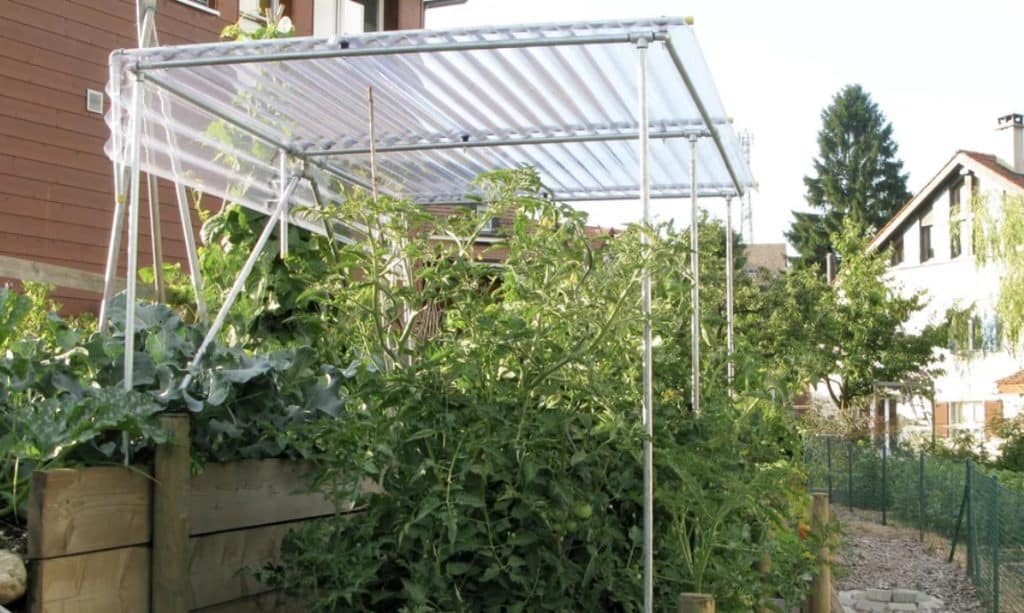
Craft personalized tomato shelter for hail protection
Prepare the shelter beforehand and watch the weather forecast to predict when to expect the hail. That way, your shelter will be in place before the hail starts.
4 Methods to Protect Tomato from Wind
During the summer, vegetable cultivation faces the challenge of heavy rain and strong winds. Fortunately, tomato plants are less affected compared to other vegetables. Nonetheless, there might still be slight damage to mature tomatoes. To mitigate this, you can try the following methods to minimize the impact.
1. Using Windbreaks
To counteract strong winds, utilize windbreaks. You have two options: natural windbreaks, such as trees, or artificial windbreaks, like wall barriers, which can shield your tomato plants from direct exposure to the wind. Alternatively, if your garden lacks natural windbreaks, consider acquiring and installing HDPE windbreak netting.
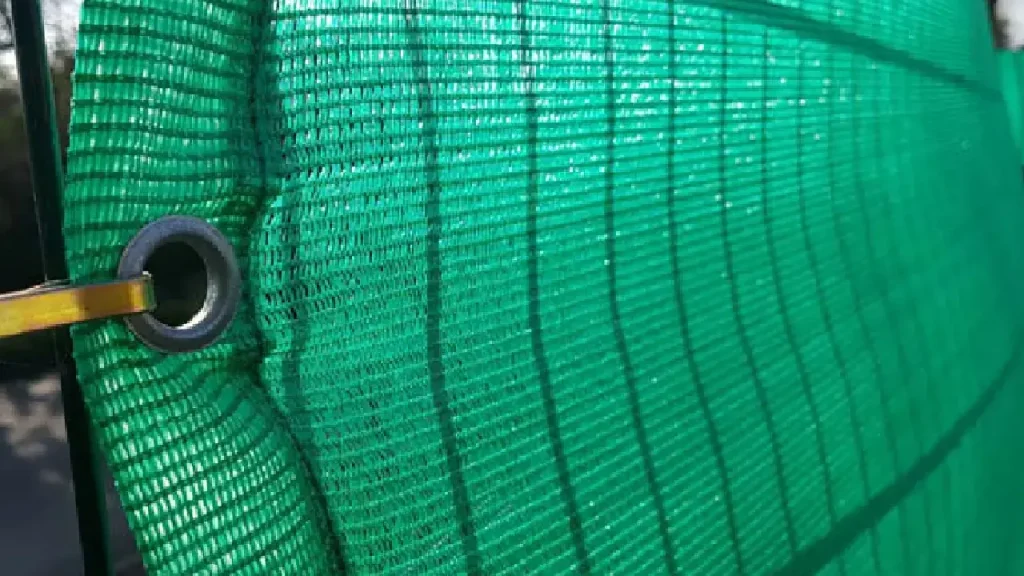
INSONSHADE HDPE windbreak netting
2. Secure with Sturdy Supports
Tomatoes are relatively more tolerant of inclement weather. However, if tomato plants are not adequately secured, they can still be vulnerable to damage from compression or being knocked over. Therefore, it’s best to install supports or fixings to ensure they remain stable during heavy rain and strong winds. This reduces the risk of the plants being affected by adverse weather conditions.
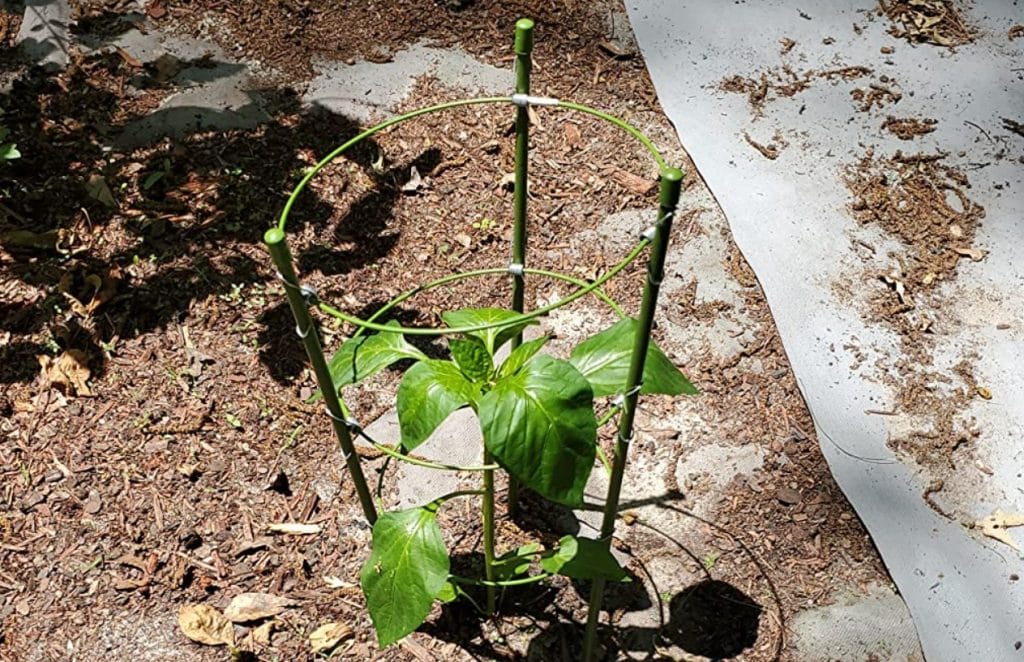
Tomato wind protection – sturdy support for Tomato
3. Cutting Right (Pruning)
Pruning is vital in keeping your tomato plants healthy. You should prune tomatoes early in the morning or afternoon when there is minimal wind. While at it, get the best sharp tools to avoid damages and ensure you carefully identify the suckers you want to prune. Still, ensure the tomato plant is about 12 inches before you can start pruning it.
4. Picking Strong Types of Tomatoes
The type of tomato that you plant matters a lot in determining how strong your plants are to withstand strong winds. For instance, if you go for determinate varieties, such as “Patio Princess” or “Roma,” you will notice they are bushy and stronger than other varieties.
You must properly space such varieties to allow them to develop their leaves. Again, ensure you regularly water them to ensure healthy growth.
Other Things to Think About for Tomato Planting during Summer
A. Making Sure Water Can Get Out (Good Drainage)
When the tomato plants get exposed to excessive water, excessive moisture will develop in the root zone, causing waterlogging. Such a case will negatively affect the health of your plants and can make the tomato plants die.
You can ensure excessive water doesn’t affect your tomato plants by creating proper drainage around the plant to ensure excessive water has a way out. Still, ensure moderate watering and create raised beds where possible for good drainage.
B. Keeping Away Bugs and Sickness (Pest and Disease Control)
Your tomato plants are likely to get affected by bugs and diseases, such as aphids that feed on the sap and distort the leaves, whiteflies that cause yellowing, tomato hornworms that defoliate the plants, etc.
These bugs and diseases can negatively affect the yields you get from your tomato plants. Thus, consider using necessary pesticides to kill bugs and prevent diseases. Still, remove the infected plants and consider adequate spacing when planting to aid air circulation.
C. Giving Enough Food (Nutrition)
How your feed your tomato plants matter in protecting them and ensuring abundant yields. Tomato plants require to be fertilized when planting before they start flowering and when the fruits start appearing. You can utilize aged manure or compost. Alternatively, you can use a fertilizer with a balanced nitrogen content and rich P-value.
Conclusion
As a farmer, keeping your tomato plants healthy and protected is vital in determining the yields you get. Throughout this post, we’ve discussed various methods you can use to protect your tomato plant from hail and wind during summer. Moreover, we’ve mentioned other factors to consider to ensure the healthiness and safety of your tomato plants. Hopefully, you now understand how best to keep your tomato plants safe during summer.
